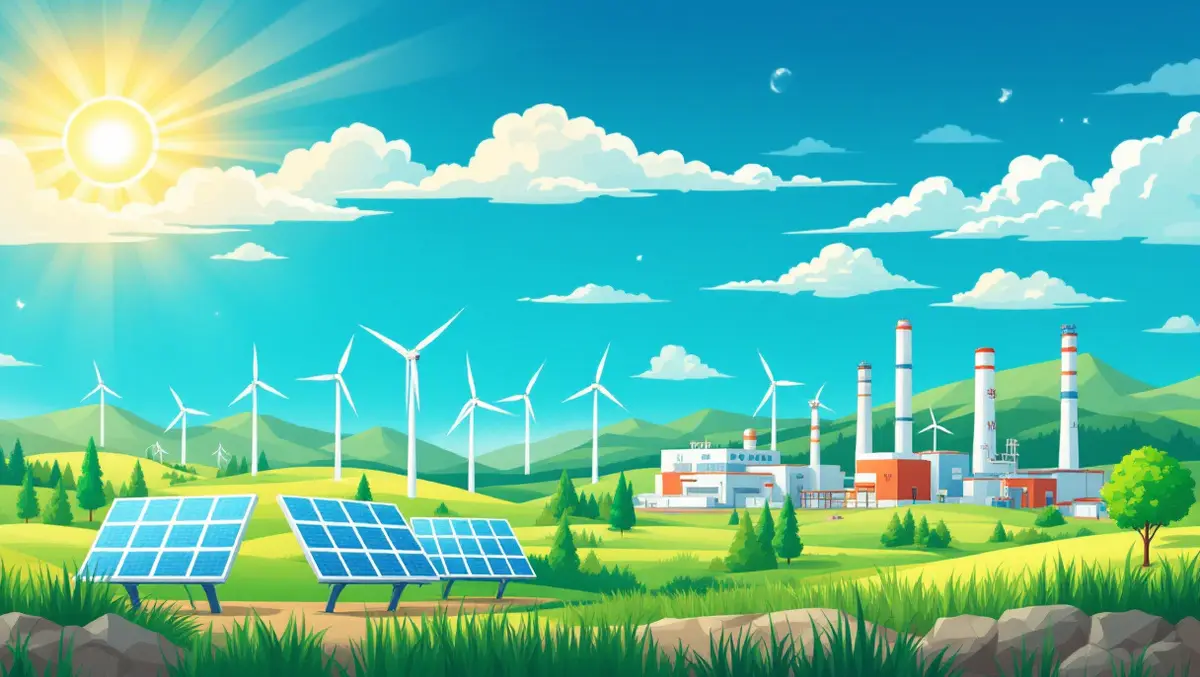
Three trends shaping today’s energy sector
Over the last two decades, we have seen the energy sector facing a growing number of challenges, but never more so than in the last couple of years where companies are forced to navigate through geo-political tension and growing uncertainty. The growth in power-hungry AI, the drive for electric vehicles and more electrification and even extreme weather events are creating opportunities, challenges and risks for the sector.
Here, we look at three key trends shaping the energy sector today.
- Virtual Power Plants
Balancing energy supply and demand is critical to maintaining a reliable electricity grid. Virtual Power Plants (VPPs) offer an alternative solution to traditional approaches, allowing local grid operators to use energy flexibility to ensure a more stable supply.
A key driver is the emergence of falling battery storage costs, increasing the capability of VPPs as grid resources. First generation implementation for OpenADR in the VPP market was through rooftop solar and storage. Companies are now developing EV charging management systems that support flexible pricing, solar integration, and AI-based predictive load balancing.
Now, the industry is starting to look at aggregating resources, even at a residential level. As a result, VPPs are attracting attention. Drawing on the capacities of a range of energy sources, from wind turbines and solar PVs to home batteries and EVs, the cost of implementing VPPs can be much lower when compared to traditional power sources but offer all the potential for enhanced grid reliability and efficiency.
OpenADR is part of a VPP project with Marin Clean Energy (MCE). MCE is leveraging its status as California's first Community Choice Aggregation (CCA), and its work as a load-serving entity, scheduling co-ordinator and registered Demand Response Provider to demonstrate how CCAs can use VPPs to create new opportunities and value for the buildings they serve, while enhancing grid health and reliability.
Those already looking at the VPP market are focusing on using advanced technologies and open standards, helping to drive growth. Utilities and energy providers will need to collaborate with others including technology companies and product manufacturers to turn homes, workplaces and communities into VPPs. Governments will also need to facilitate change through regulation and legislation to realise the full potential of VPPs.
- AI and data centre growth
The explosion in artificial intelligence (AI) will mean more demand for high-density data centres – and more energy to power them. According to Goldman Sachs Research forecasts, global power demand from data centres will increase 50% by 2027 and by as much as 165% by the end of the decade (compared with 2023).
With the growth of AI and the expectation of what it can deliver, the next few years are going to be interesting as we witness huge rise in the number of data centres, with serious consequences – and one of the biggest challenges – for the sector today. At the same time, tech firms are under more pressure to make data centres more sustainable.
Could microgrids be the answer in providing a more efficient energy supply for data centres? Having this type of small-scale, localised electrical grid – that can operate independently or in conjunction with the main power grid – may help overcome grid constraints and improve reliability. For data centres that require uninterrupted operation, this ability to deliver resilience is critical.
By integrating renewable energy sources, like solar and energy storage, microgrids can also reduce carbon footprint, while helping to reduce operational costs by utilising local power generation and demand-response strategies.
Data centres need a very high continuous supply of power, and microgrids offer options for a more resilient and responsive energy infrastructure. Decentralised power through a network of microgrids could help dynamically manage power loads and optimise renewable energy sources as we head towards an increasingly AI-powered future.
- Flexibility in EV charging
Electrification represents a once-in-a-generation transformation of both the automotive and the energy sectors. We are already seeing a significant number of charging programs using standards like OpenADR and the Open Charge Point Protocol (OCPP), an open standard communication protocol for EV charging stations.
The industry is still developing, with more innovation to come. Aside from the basic communication protocol, EV charging includes a number of systems. From the plug to the customer interface, these systems must become more standardised in their roles and interactions to provide a customer-friendly and scalable solution for the future.
Many countries around the world are investing in EV charging infrastructure, pushing it as part of their net zero goals and climate change agendas. But if everyone goes electric, grid capacity is put under huge strain if people decide to charge their car during peak hours. Forecasting peak use and balancing this extra demand will be critical as the rollout of charging infrastructure escalates.
Electricity suppliers will need to incentivise consumers to charge their vehicles outside of these peak time by offering lower rates and other incentives. Showing customers that they can save both money and energy is key to success.
Standardised information exchange on pricing, consumption and capacity using open communications standards are the basis for effective load control, enabling suppliers to respond flexibly to fluctuating demand.
In a rapidly changing sector, it will be interesting to see how these trends develop, and how the role of open standards can support future energy flexibility developments.